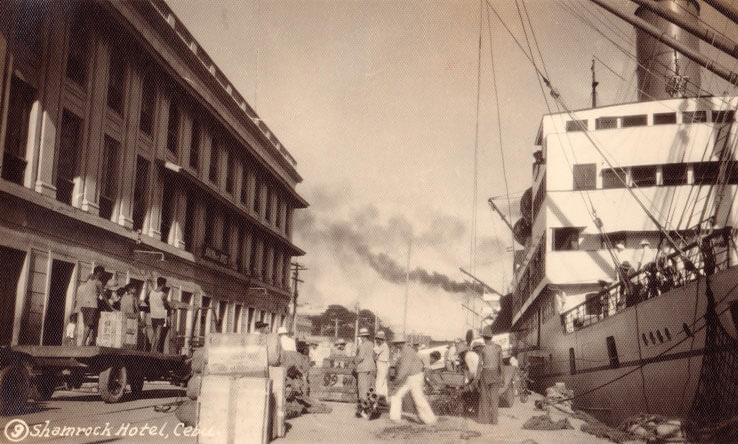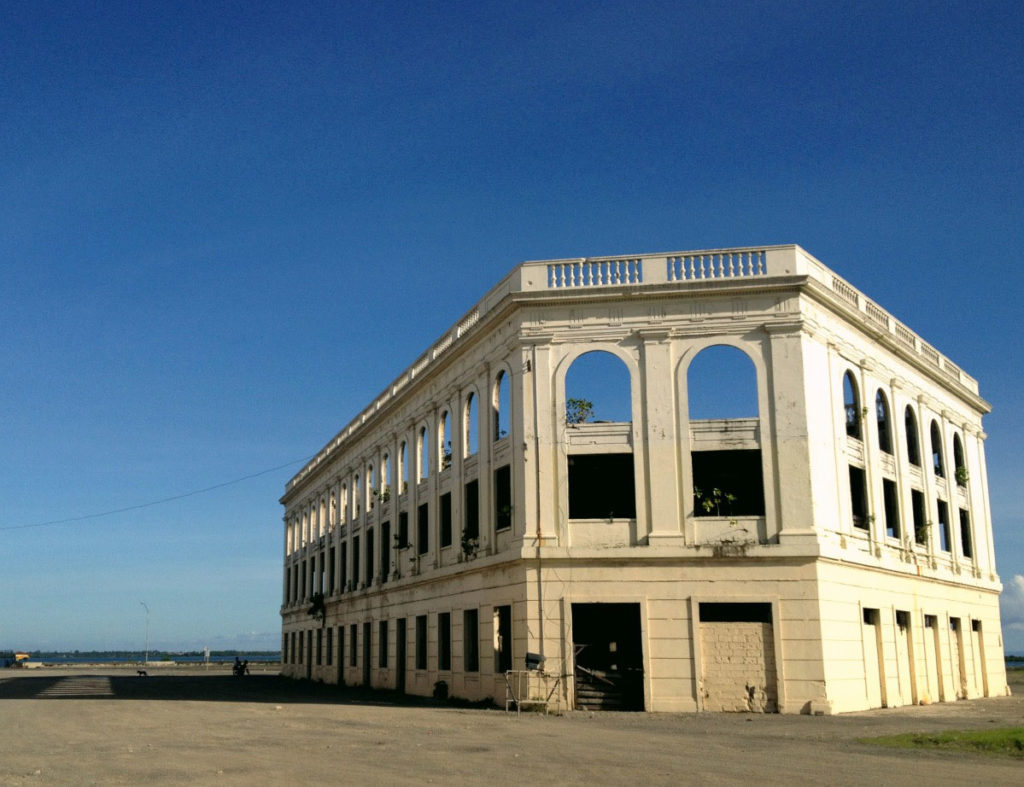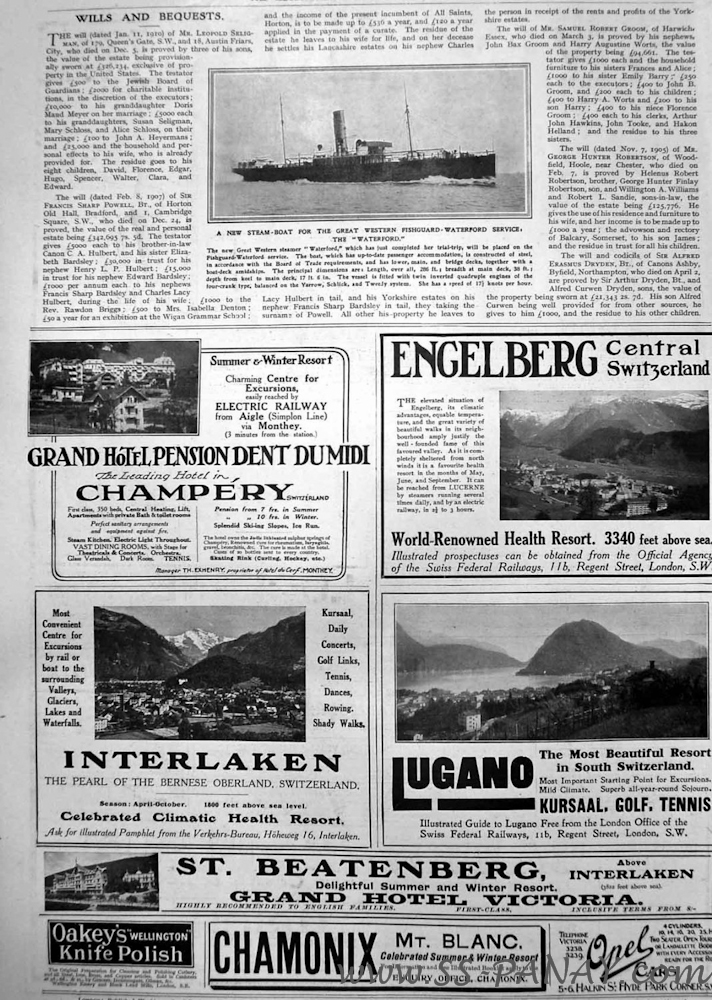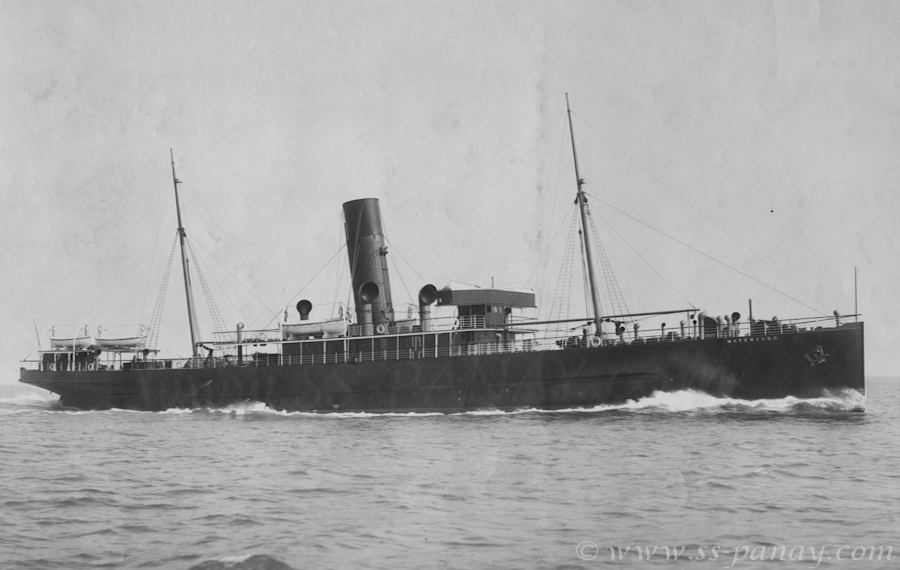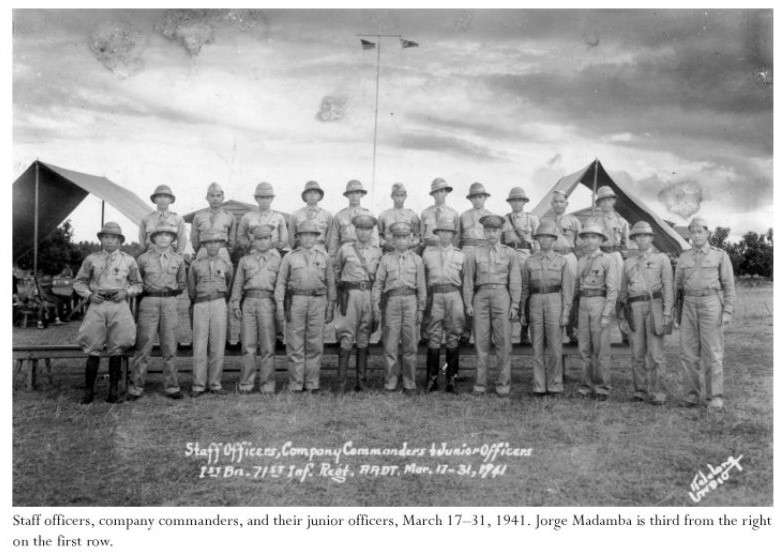The history of the SS Panay does not reveal all its secrets despite extensive research. During the Second World War, the part of the historical archive of the GWR (Great Western Railway in England), which housed the department ships, was destroyed. Thus much information about the SS Panay is irretrievable.
The construction and history of SS Panay
The SS Panay was built under her baptismal name TSS Waterford (2) by the shipyard Swan, Hunter & Wigham Richardson Limited, in Newcastle upon Tyne (GBR).
Start of construction ov. 6, 1911.
After a construction period of just under 5 months, the launch took place on February 20, 1912. Further extensions on the equipment dock also took seven weeks.
The Costs…
The bill amounted to just under £ 24,000.
Excluding the boilers, steam engines drive and screws. These items were unfortunately not shown on the invoice.
It is not possible to convert the sum easily into today’s value. But one can say that a simple craftsman or shipyard worker in 1912 had a yearly wage of about £ 100.
Maiden voyage
On April 16, 1912, TSS Waterford set off on its maiden voyage and its history began.
This process did not attract too much attention. On the one hand, the TSS Waterford , at just under 90 meters, was more of a mediocre cargo steamer and, on the other hand, the Titanic had sunk the night before. The entire media’s attention had been focused weeks before on the new ship of superlatives, the R.M.S TitanicThe reports rolled over in all the newspapers as the news of the sinking arrived.
The interest in a little gray duckling that stumbled into the sea somewhere on the east coast of England was not all that high. Nevertheless, the magazine „Illustrated London Newsand the „Shields Daily News“ has dedicated a small report to TSS Waterford.
.
Illustrated London News (London, England), Saturday, June 01, 1912; pg. 864
.
.
TRIAL TRIP OFF THE TYNE
(Shields Daily News, Thursday, 18/04/1912)
TRIAL TRIP OFF THE TYNE A new steamer fot he Fisguard and Waterford service oft the Great Western Railway Co. Completed a ver satisfactory trial trip off the Tyne on Tuesday. The vessel has been built an engined at the Neptune Works of Messrs Swan, unter and Wignam Richardson. Ltd. She is built of steel, and is primarlly inteded for service as a cattle and cargo boat, but a certain amount of passenger accommodation is fitted to meet the requirements of her intended trade. The steamer has been built go Lioyd’s requirements, is 275ft. In lengtht x 38ft. Beam, and is fitted with twin screw quadruple espnsion engines, balanced on their Yarrow, Schlick and Tweedy system, being supplid with steam by four multitublar boilers. On the trial trip a mean speed of 17 ½ knots was attainde, and teh exellence of this type of machiner in preventing vibration was very noticeable.
The first-class passenger accommedation is placed on the bridge deck, and it consiets of dining saloon, smokerroom, and staterooms. The dining saloon is fitted up in Mahogany, and the upholstery is of red railway repp whilst the smokerroom is panelled in oak and upholstery in green leather. There is sleeping accommodation for 28 passengers. The ladies’ room is of sycamore and birch, and upholsterd in blue velvet; whilst the gentelman’s cabin is of mahogany with crimson velvet upholstry. The whole oft he main and lower decks are tuilised for carrying horses and cattle, here being accommadition for 20 horeses and 500 head of cattle. Particular attention has been paid tot he ventilation of these spaces, and every precation has been taken to prevent injury tot he animals The auxillary machiner is oft he lastet type. The vessel is lighted electrically, and particular attention has been paid to the safety of the passengers. In addition of the vessel’s use as a corsschannel steamer, she will also serv as a tender ot liners calling at Fishguard, and for this purpose the bridge deck is eceptionally clear, affording good space for passengers and baggage.
.
–
Transfer and Order of the TSS Waterford
The ship was transferred from Newcastle (England) to Waterford in Ireland There the TSS Waterford was handed over to its owner, the “Great Western Railway”.
The TSS Waterford should now support its two sister ships,the “TSS Great Western” and “TSS Great Northern”. The ships were operating as Fähr und Frachtschiffe on the Irish Channel. Every day they sailed between England and Ireland on the Waterford-Fishguard route.
The two older sister ships TSS Great Western and TSS Great Northern were like twins and looked almost identical. Although the hull mass was identical even on all three ships, the sister, ten years younger, stood out clearly. The TSS Waterford had, in comparison, only a light and open deck construction, while the other two guard deck ships appeared much more massive.
Fittings
Each of the two sister ships had room for 246 passengers in der ersten Klasse und 439 passengers in der dritten Klasse.
In the salon class there were an additional 56 berths.
Salon class – that sounds so noble, but was really only a mass dormitory. Up to 500 cattle could be placed in each of the ships’ holds.
Im Frachtraum der Schiffe fanden je bis zu 500 Rinder platz.
The kleine Schwester hatte deutlich geringere Passagier Kapazitäten. Den TSS Waterford wurde hauptsächlich als Tier & Stückgut Frachter konzipiert und konnte so auch nicht mit den hohen Passagierzahlen ihrer Schwestern mithalten. Die genauen Passagier Zahlen sind allerdings nicht bekannt.
The original invoice for the cabin construction shows the following rooms
- Wheelhouse
- Captain+ Officer’s room
- Corridor
- Women’s salon
- Men’s salon
- Smoking room
- Staff room
- Storage room
- Pantry
- Maschinenraum
- Bathroom and 3 x Restrooms
Es ist bekannt das es eine Erste Klasse gab und diese insgesamt über 28 Betten erfügte, die genaue Anzahl der Kabinen oder dessen Aufteilung ist allerdings noch ungewiss.
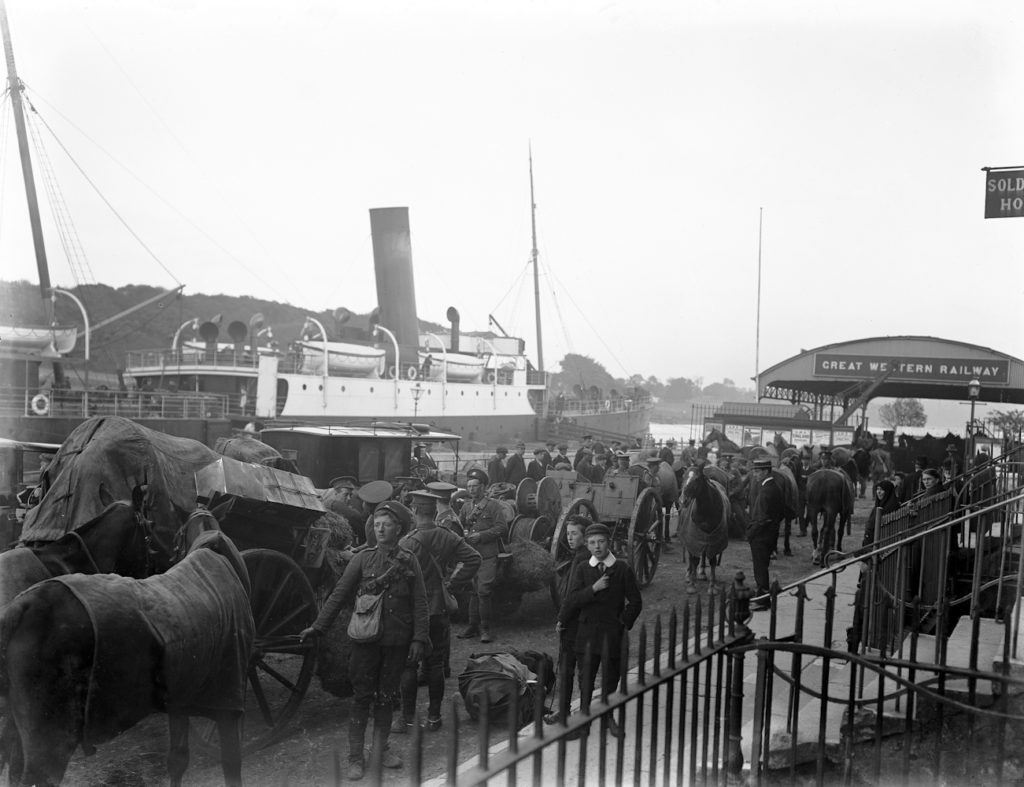
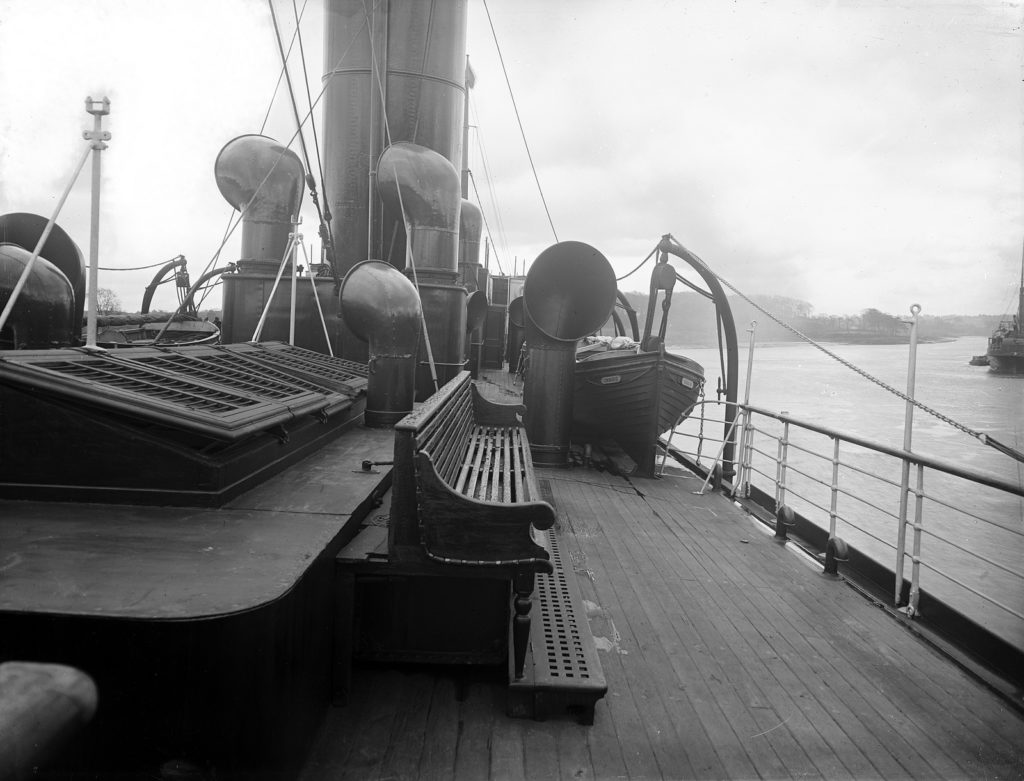
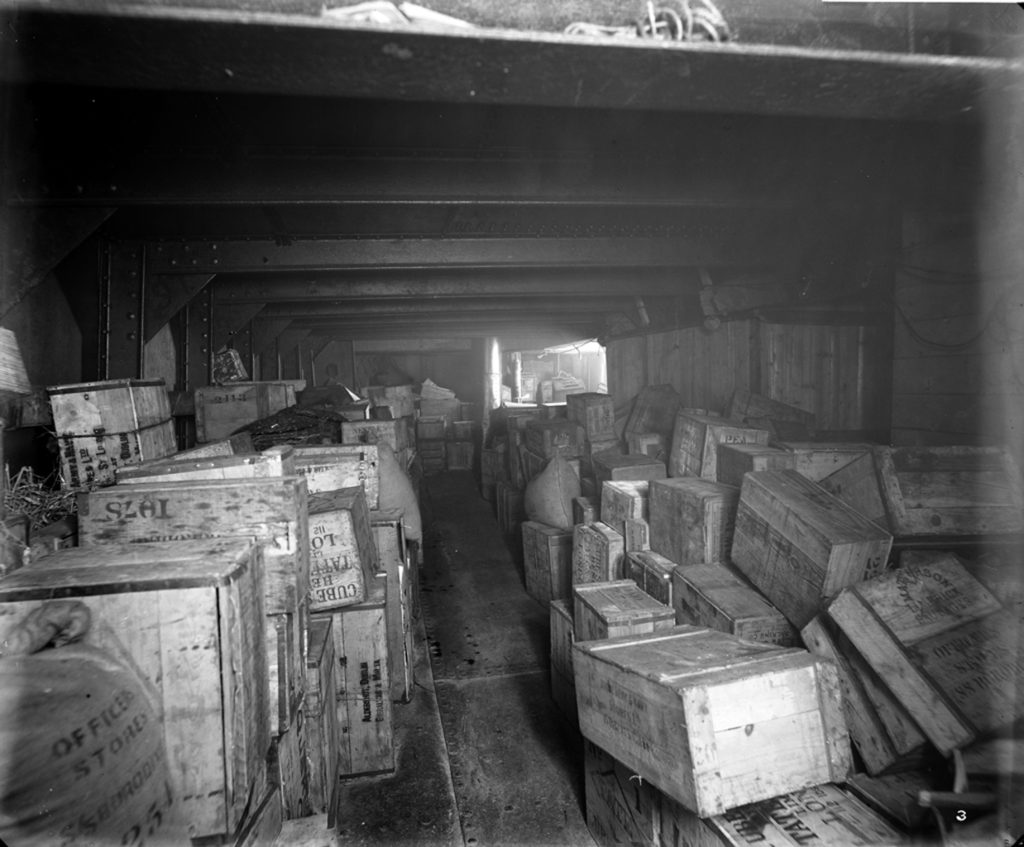
The steam engine
The TSS Waterford could also trump the others. It was the only ship in the entire G.W.R fleet equipped with two four-cylinder steam engines. ausgestattet war.
The cruising speed of the TSS Waterford was 17.5 knots (about 32 kmh / 20 mph). It was also a bit faster than its sister ships. The canal crossing took about 5 hours.
The advantage compared to the conventional triple expansion steam engines lay in the high smoothness and comparatively lower consumption of water and coal. This type of machine was mainly used for prestige objects such as passenger liners and luxury liners due to its higher cost and space requirements. The quadruple expansion steam engines are extremely rare. Ultimately, they cannot come through against the emerging steam turbines and oil engines.
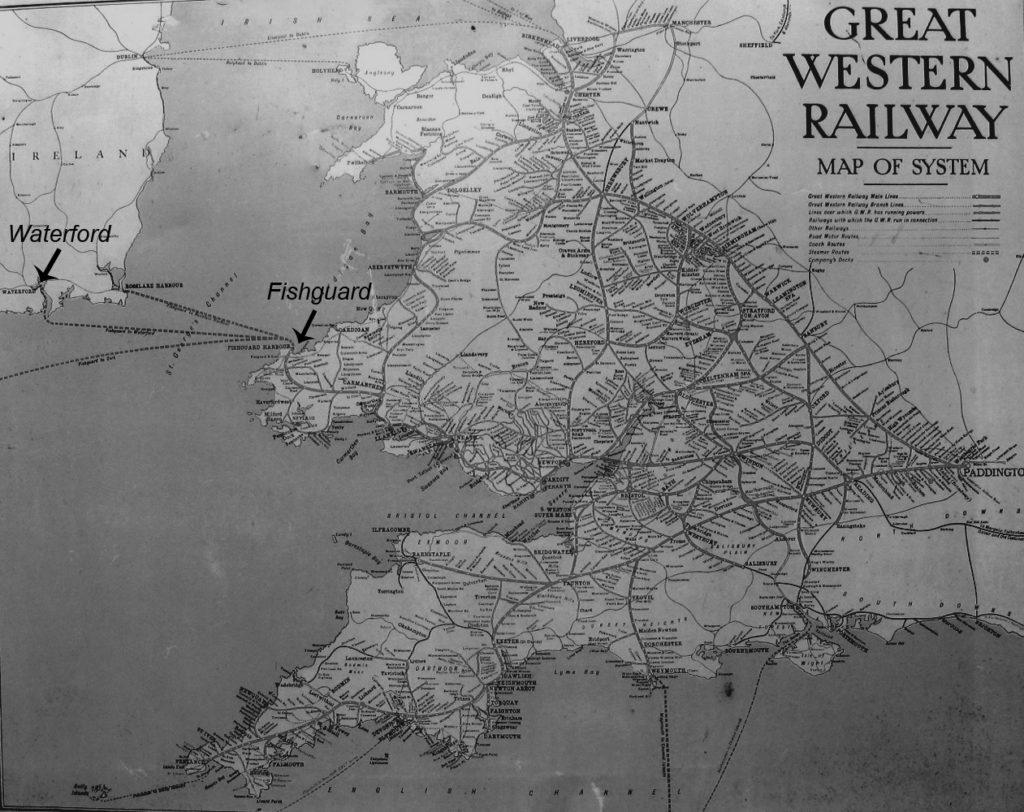
1st World War
Although the owner and operating company theGreat Western Railway“ Company zwischen 1914 und 1918 noch elf weitere Dampfschiffe im the Irish Channel in use, not a single was lost in 1st World War verloren.
In fact, there is a report of an almost fateful encounter, duringwhich the TSS Waterford spotted a German submarine despite bad weather and rough seas. She changed course to ram the submarine. The submarine was able to dip at the last moment. U-Boot zu rammen. Das U-Boot konnte im letzten Moment noch Wegtauchen.
The bow tip (that is, the front) is the most stable part of a ship and can severely damage or even sink another ship by a ramming maneuver
Such a maneuver was the only way to defend an unarmed ship against a submarine but could have had fatal consequences for the TSS Waterford in a collision.
German U-boats during the First World War were up to 70 meters long and with a displacement of up to 900 tons—no lightweights—depending on the type.
So ein Manöver, war die einzige Verteidigungsmöglichkeit, eines unbewaffneten Schiffes gegen ein U-Boot. Hätte aber bei einer Kollision auch fatale Folgen für die TSS Waterford haben können.
For a better overall impression, here is a compilation of all G.R.W. Ships during the First World War.
Die TSS Waterford war als leichter Schutzdecker mit nur 3 Quer Schotts im Unterdeck konzipiert. Dies hätte bedeutet, wenn das erste Schott (das Kollision Schott am Bug) bei dem Rammmanöver unter der Wasserlinie beschädigt worden wäre. Wäre das Unterdeck bis zum Maschinenraumschott, und somit auf einer Länge von 35 Meter vollgelaufen.
Rechnerisch wäre das Schiff gerade noch schwimmfähig gewesen, aber der Untergang wäre bei rauer See dennoch wahrscheinlich gewesen.
Um einen bessern Gesamteindruck zu bekommen. Hier noch mal ein Zusammenstellung G.R.W. Schiffe während des Ersten Weltkrieges.
Manila
After 12 years’ service, the era of TSS Waterford as Great Western Railway ship ended in September 1924. September 1924 die Ära der TSS Waterford als Great Western Railway Schiff.
It fell victim to the restructuring of the Great Western Railway Company in the early 1920s and was sold to the Philippine shipping company “Compania Maritima,” based in Manila.
At the end of 1924, the SS Waterford was officially removed from the English Ship Registration Register, and transferred to Manila.
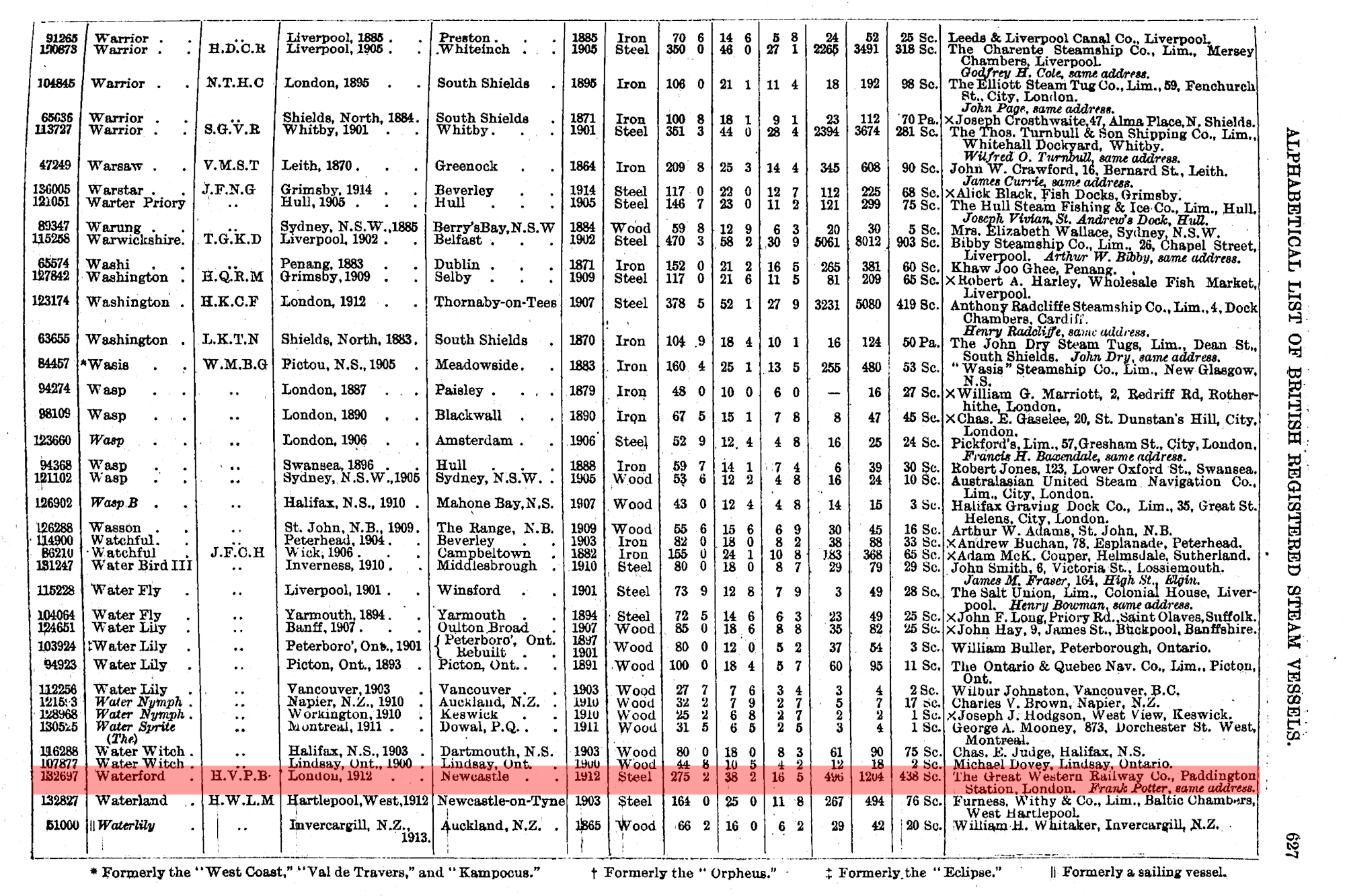
Die TSS Waterford traf Ende 1924 in Manila ein und wurde erstmal umfangreich umgebaut.
Nachweisliche wurden die Deckenstützen des Brückenhauses verdoppelt, um die Tragfähigkeit des Aufbaudecks zu erhöhen.
Es wurden weitere Türen eingesetzt. Die kleinen Bullaugen seitlich am Brückenhaus wurden zu luftigen Fenstern.
Das Brückenhaus selbst wurde um einige Meter verlängert und das Schattendeck dadurch geschlossen.
The TSS Waterford was renamed SS Panay
All ships of the Compania Maritima were named after Philippine Islands benannt.
The currently only known image showing the SS PANAY in the Philippines was provided by the “The Corregidor Historic Society.” It was photographed in 1933 in Manila on the “Pasig River Dock” on the back of today’s Imigrations Office in Intramuros and probably comes from the “Shawn Welch Collection”.
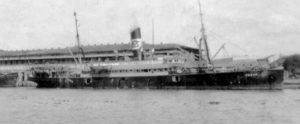
Update: January 2018
Reviewing the many archives and thousands of pictures ultimately provided the hoped-for success.
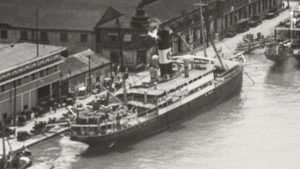
The new order of SS PANAY
The SS Panay got a new task as cargo and ferry with probably greatly increased passenger numbers. She sailed from 1925 on the north-south route through the Philippines. Every week from Manila in the north to Midanao in the south, and back.
“The Panay was the largest and fastest inter-island steamer to call at Dumaguete, and only the worst of typhoony could disrupt her weekly schedule fo arrivals and departures.” Sorce: Book/”Stranded in the Philippines: Professor Bell’s Private War Against the Japanese”
Die Reise Route:
Freitag 7.30 Uhr Abfahrt von Manila
Samstag 9.30 Uhr Ankunft und 17.00 Uhr Abfahrt in Cebu
Samstag Abend Ankunft in Dumaguete
Sonntag Morgen Abfahrt von Dumaguete nach Misamis und Iligan
Montag Abfahrt von Iligan und Ankunft gegen Mittag in Dumaguete
Donnerstag 7.30 Uhr Abfahrt von Cebu nach Manila
Freitag 9.30 Ankunft in Manila
Itinerary of SS Panay from 1924 till 1941.
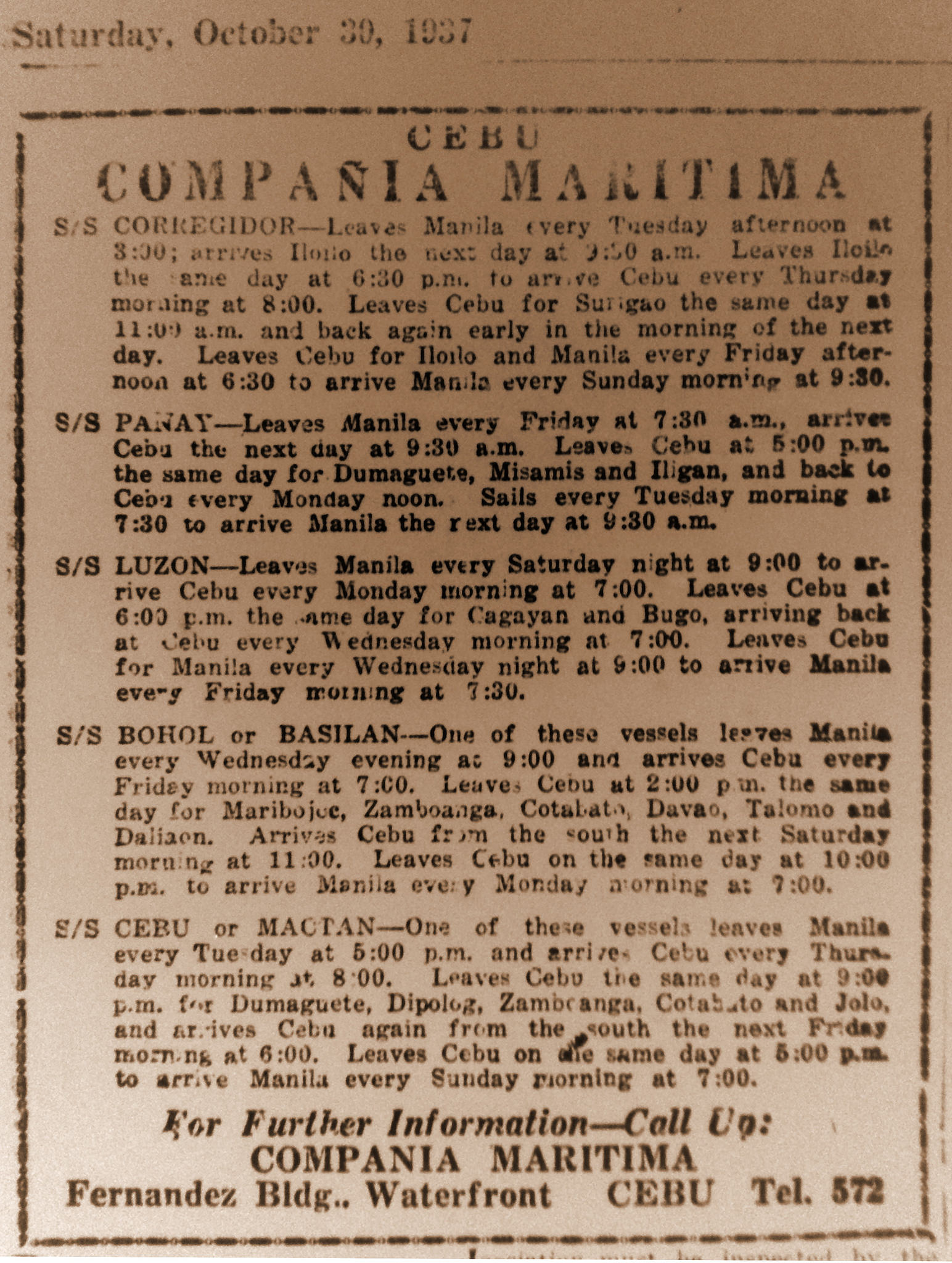
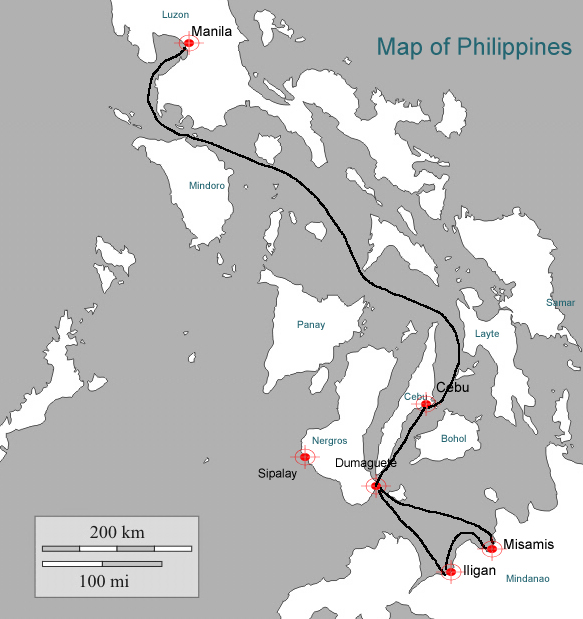
2nd World War
December 8, 1941, Attack at the Philippines!
A look at the map reveals quickly that the SS Panay did not pass Sipalay but sank into Campomanes Bay. With the outbreak of World War II, the Philippines were increasingly threatened by Japanese forces from the north and south. The regular shipping route was discontinued due to a Japanese destroyer patrolling the south between Mindanao and Negros.
Dumaguete
On December 8, 1941, the SS Panay, under the leadership of Captain Clemente Sumcad, was moored for the last time in Dumaguete. After the news of the attack on Manila spread on the pier, many passengers left the ship in panic.
Manila
When the Philippines was attacked by Japan on December 8, 1941, the US Army devised contingency plans for defending Manila and the rest of the country. This included the use of civil resources and infrastructure, especially the ships.
The „List of Vessels“ an inventory of all Philippine ships served asthe basis thereof.

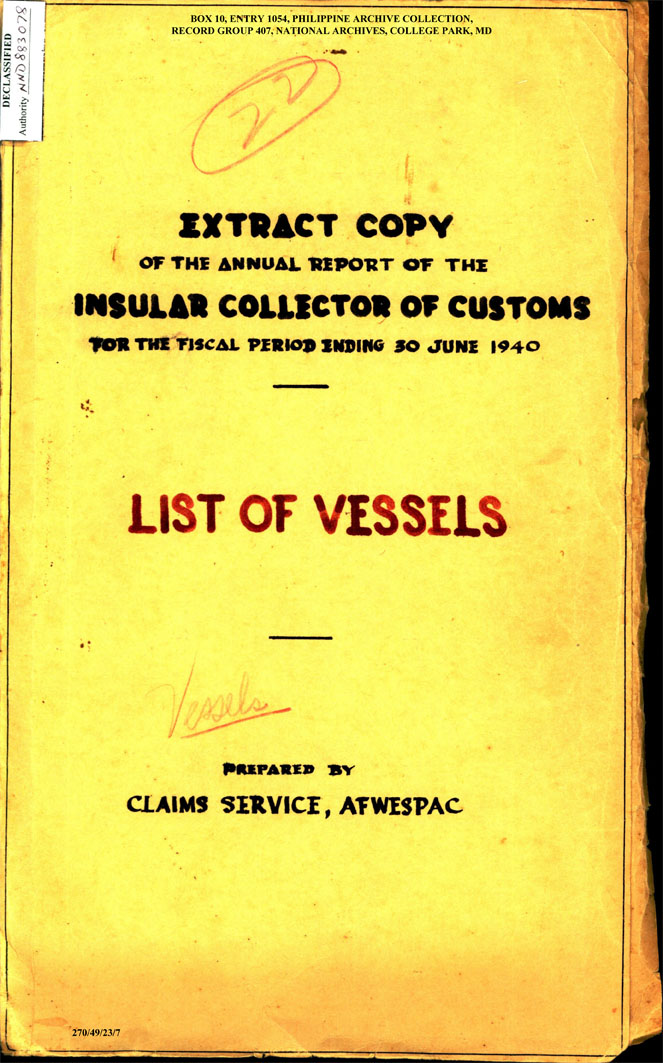
This 90-page list includes all vessels approved in the Philippines until 1940, a total of almost four thousand.
Their usage has been set as follows:
All passenger steamships were subordinate to the US Army for logistical support in the defense of the Philippines. Total: 24 Interisland steamer.
All other smaller ships should be available to the US Navy.
On the evening of 20/12/1941, when events unfolded and it became clear that Manila could not be defended, the port office’s office, under the responsibility of Col. Frederick Ward (Officer in Charge of Army Transport Service), seized all available vessels.
The SS Panay wurde für die US-ARMY rekrutiert. Ab 20. Dezember 1941, evakuierte sie Kriegsmaterial, Proviant und Truppenverbände aus dem Hafen von Manila nach Mariveles.
In the port list of Manila, the following movement of the SS Panay are still registered.
- Dec 10, 1941, Entered – Dec 10, 1941 Sailed
- Dec 15, 1941, Entered – Dec 16, 1941 Sailed
- Dec 20, 1941, Entered – Dec 21, 1941 Sailed
- Dec 24, 1941, Entered – Dec 25, 1941 Sailed
On Dec 25, 1941, the SS Panay got a new destination port, Pulupandan on Negros.
Die SS Panay sollte zur Unterstützung der „Visayan-Mindanao Force“ dringend benötigte Waffen und Ersatzteile liefern. Die SS MAYON sollte ihr zwei Tage später mit Ziel Mindanao in Richtung Süden folgen.
The file situation before 1943 is very poor.
The US-ARMY ARCHIVE is in Washington D.C. On request, I confirmed that there were no records of the use or seizure of ships or their cargo before 1943.
Most files on the activities of the US Armed Forces in the Philippines were destroyed for secrecy during the retreat in 1942. In 1951 there was another big file cleaning
„But to answer your overall question, the SS Panay was placed in the service of the US Army. There are probably very few records because the Panay was in the Philippines, and the US Army as a whole did not keep records of their US Army Transports. According to our records, in 1951 the Department of the Army destroyed all manifests, logs of vessels, and troop movement files of United States Army transports for World War II and most of the passenger lists. Also the Panay was sunk before the establishment of the 10th Fleet of the US Navy, which would have kept movement cards on the vessel had she been used throughout the war.“ Quelle, E-Mail von National Armee Archiv, 15.02.2017
The Japanese Air Force had air superiority over the Philippines early in the war and posed a constant threat to shipping. Artillery ships could only travel at night in the dark, while most Japanese planes were on the ground. The Campomanes Bay, due to the location, offered a great opportunity for large ships to hide during the day and wait for the next night. Flieger am Boden waren. Die Campomanes Bay bot, auf Grund der Geschützen Lage, eine gute Möglichkeit für große Schiffe sich tagsüber zu verstecken und so die nächste Nacht abzuwarten.
On December 27, 1941, the destroyer USS Peary (DD-226) was anchored on the way to Darwin in the Campomanes Bay and was able to hide with its camouflage from 5 enemy patrol bombers.
On Dec. 28, 1941, the SS Panay, severely damaged by a torpedo hit, reached Campomanes Bay.
The SS Panay was attacked on the way to Pulupandan by the Japanese Navy, and then changed its original course to seek protection in the bay from further attacks. Quelle: Book : Deare and Live
On the morning of Dec. 29, 1941, the SS Mayon reached Campomanes Bay and reported a large debris field and lifejackets floating in the bay. The SS Mayon took part of the crew of the SS Panay and left the bay at evening.
(„(“There was an enormous amount of debris (including life preservers) floating on the water on this cove. It was later learned that the Japanese had sunk the sister ship of the Mayon, named the SS Panay, where the Mayon anchored.” Sorce: Don & Dean Larson reports 2nd wold war.-28th Bombardment Squadron ) Mayon, named the SS Panay, where the Mayon anchored.“ Quelle: Don & Dean Larson reports 2nd wold war.-28th Bombardment Squadron )
„That at dawn of 29 Dezember, 1941, we arrived without such difficulty at a spot called camopmanes where we picked up survivors of the ill-fated SS PANAY, wich was sunk the day previous on the same spot that at dusk of the same day we left in the direction of Mindanao carrying with us a portion of the deck and engines crews of the ss Panay.“ Quelle: Records from Other Sections of Philippine Archives Collection/ SS Mayon
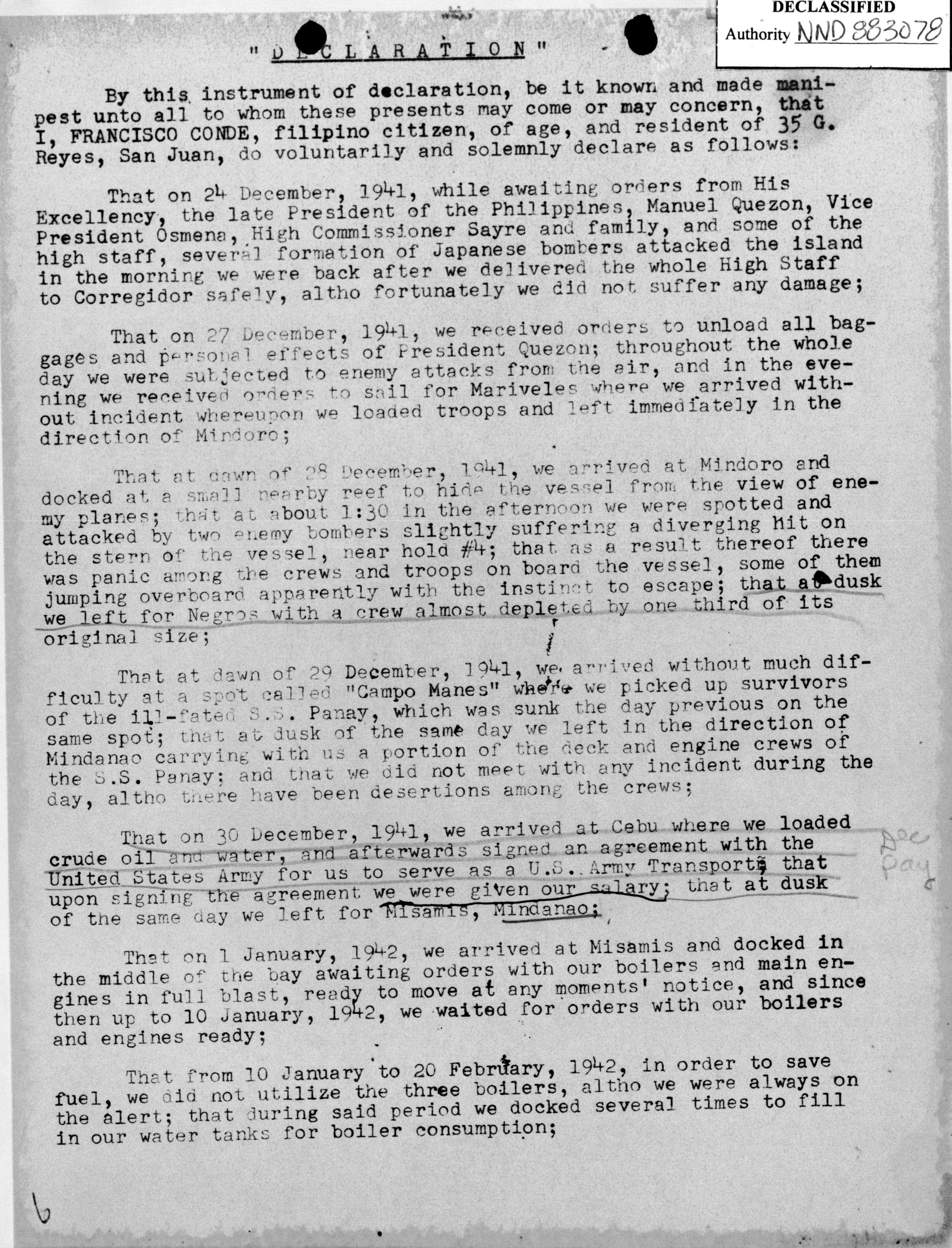
The sinking
The sinking is verifild by several trusted sources independently on December 28, 1941, as a result of an air raid by Japanese planes.
It is not clear whether the SS Panay was hit by bombs or torpedoes during the second attack inside Campomanes Bay. There are currently no trustworthy sources about the exact cause of the demise.
Captain Clemente Sumcad has been missing since 02/01/1942.
The sinking of the SS Panay is unfortunately very often falsely dated to March 1942 in current dive and wreck descriptions. This date, however, is historically unreliable and easy to refute.
I’m assuming a kind of fake “master source” that has simply been copied and copied for lack of available data and facts in the past. In addition, in some other literary sources, further incorrect dates such as January 1941 or the 10th of February 1942 are indicated. However, this circumstance, which is quite annoying at the beginning of my research, is now very helpful in verifying sources and statements.
SS MAYON – „The Queen of the Philippine Seas“
The SS MAYON spielte für die Verifizierung des Untergangssdatums der SS Panay eine wichtige Rolle. Zu einen durch die Logbucheinträge der S.S. Mayon und zum andren durch die Augenzeugen- und Tagebuch berichte der Passagiere Don & Dean Larson des 28th Bomberkommando .
Die S.S. MAYON wurde an 28.02.1941 durch zwei direkte Bombentreffer auf Deck schwer beschädigt und brannte 3 Tage. Eine Reparatur war aussichtslos, die SS Mayon wurde daraufhin vom US-Militär gesprengt und sank unweit der Flussmündung vor Butan-City (Mindanao).
Von den 64 Besatzungsmitgliedern starben 12 bei dem Angriff, darunter auch Captain, Marin Aquirre. Über den Verbleib der in der Campomanes Bay aufgenommen Crew der S.S. Panay ist nichts bekannt.
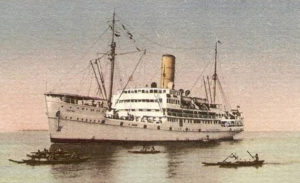
The salvage
As you know, the SS PANAY and its cargo sank to the bottom of Campomanes Bay, and you’d think that’s the end of the story, but far from it. The “Visayan Mindanao Force” consisting of US Army and Philippine guerrillas made great efforts to recover the sunken weapons and spare parts from 40 m water depth.
The first salvage attempts of the weapons and cargo took place already in spring 1942.
Der Einheimische Jorge A. Madamba from Mariaclum was in command of the 71th. Inf. Regiment in CartagenaA quartermaster unit responsible for supplying the guerrilla troops to Negros.
His then eight-year-old daughter Hellen Madamba later wrote her father’s story in the book “A Letter to my Father” and describes the salvage as follows: „A Letter to my Father“
und beschreibt die Bergung wie folgt:
” There was no way to save the USS Pany from sinking but several months later my father ,as quartermaster of teh Nergros guerrillas, decided to salvage the ship, to bring up whstever precious guns and ammunition could be retrieved for teh resistance to the occupation. Salvage divers, as such , were not aviable, so my father recruited pearl divers,men ans women who used no underwater breathing equipment, no air hoses or tanks or underwater lights, to go deep into the ocean for incredible lengths of time. The divers slipped naked into the sea, far down into its depths, and hitched ropes to wooden cartes packed with bullets, grenades, and other explosives, The crates were pulled up and hauled to shore on bancas,”Souce: Book- “A Letter to my Father”
The Great Salvage:
The US Army later dispatched Colonel Neil Britten, who was then stationed on the neighboring island of Panay in Iloilo, to investigate the possibility of carrying out a professional salvage operation. Then the “PANAY SALVAGE CREW” was founded. A uniquely preserved document lists the names of the men, their payment and the duration of the salvage action.
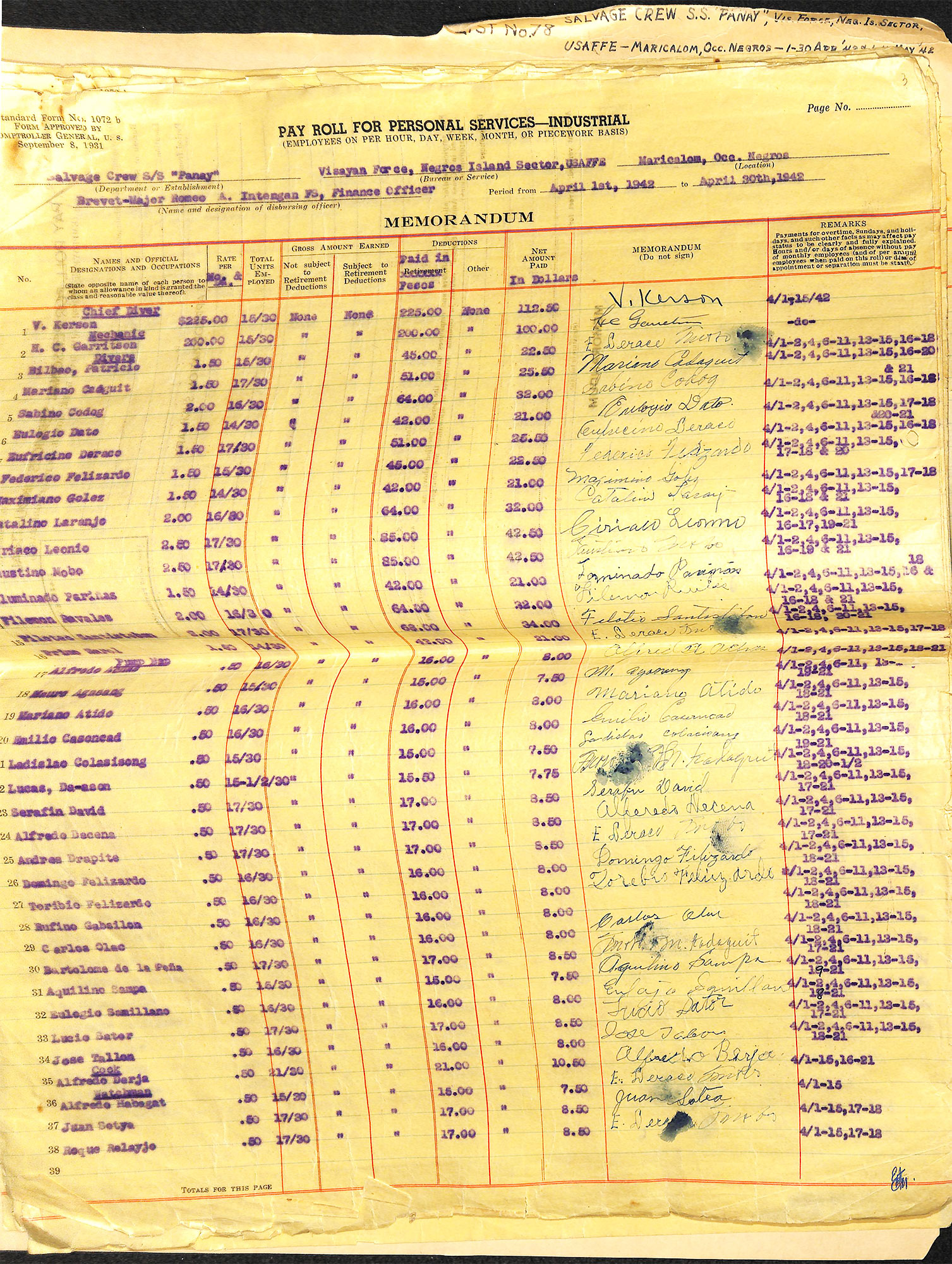
Altogether from 01.April.1942 to 16.May 1942 at least 38 men were involved in the recovery, including many native fishermen from the area. 01.April.1942 bis 16.Mai 1942 mindestens 38 Männer an der Bergung beteiligt.
darunter viele einheimische Fischer aus der Umgebung.
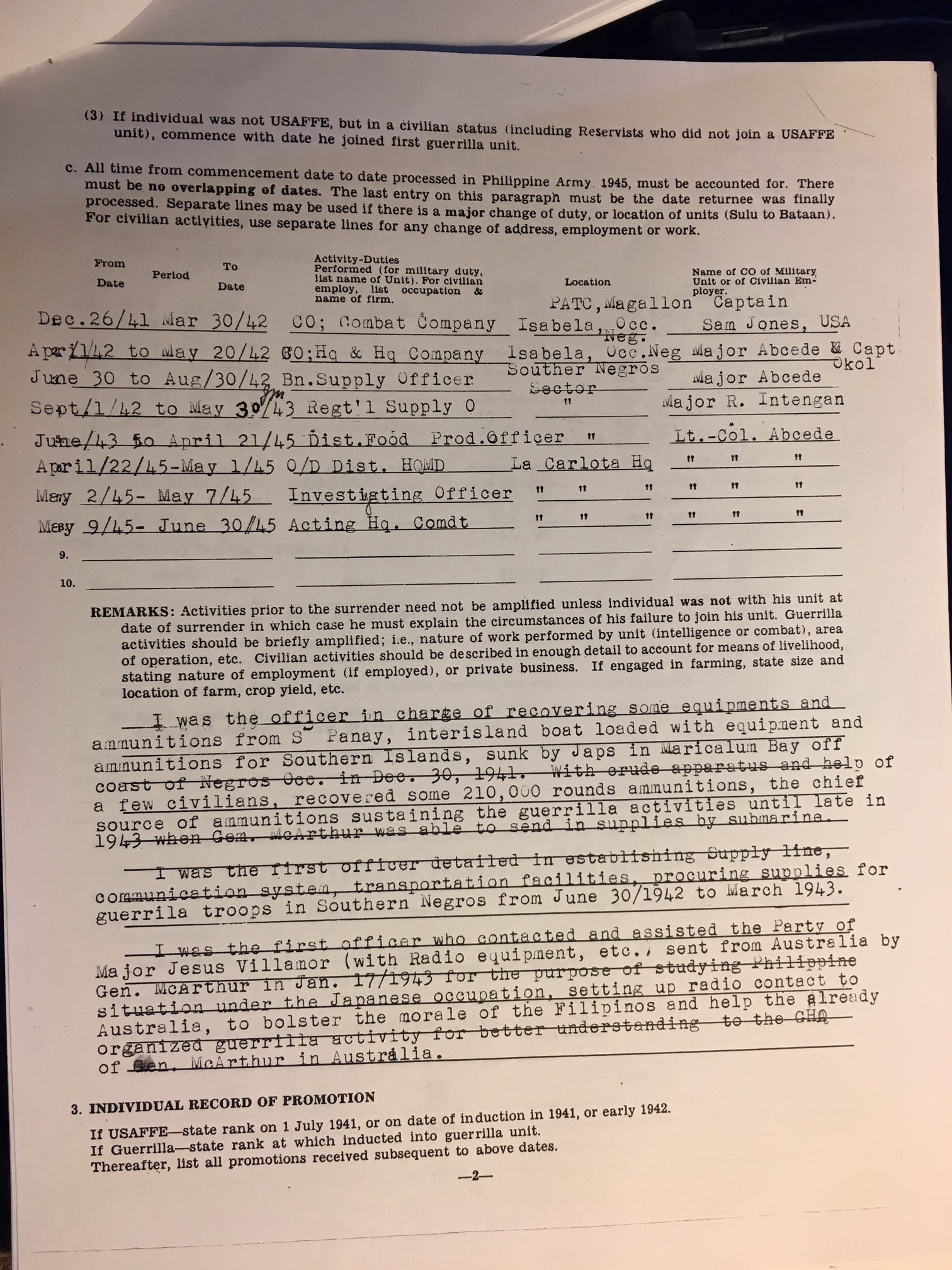
Most of the cargo was recovered, including 155mm & 105mm guns, hand grenades, 45cal. Pistols, M1 grant, and boxes with several hundred thousand rounds of ammunition. Most of it was later transported to the secret cave depot of USAFFE:”Masulog”
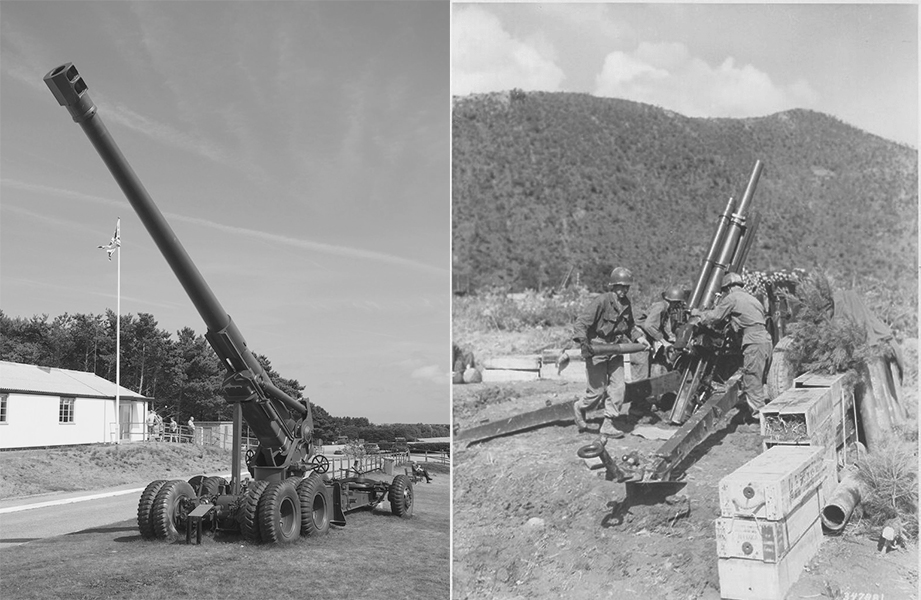
Considering the size and the enormous weight of the guns, one can easily imagine the challenges the salvage crew must have faced in 1942.
Henry C. Carretson & Vans Taivo KERSON
Salvage diver Henry C. Carretson and Vans Taivo KERSON played the key role in the recovery. Henry C. Carretson und Vans Taivo KERSON.
Henry C. Carretson:
„War US-Bürger und Bauingenieur. Er hatte auf den Philippinen seit 1920 gearbeitet, für die Regierung und später für sich selbst. Als der Krieg begann, arbeitete er für die US-Armee und half, Waffen und Munition von der SS Panay zu retten, die von japanischen Flugzeugen in Campomanes Bay auf der Insel Negros versenkt worden war. Im September 1942 marschierte Garretson in Richtung Süden, um die Guerillas auf Panay und Negros zu rekrutieren. Als er Brooke’s Point auf Palawan erreichte, erkrankte er an Malaria. Er blieb in der Gegend und half bei der Organisation der philippinischen Polizeitruppe.“
Vans Taivo KERSON:
„Vens Taivo Kierson. Er wurde in Finnland geboren und zog mit seiner Familie im Nordwesten der USA aus, als er ungefähr 15 Jahre alt war, wurde er von der Schule verbannt und arbeitete für eine Firma, die Bäume für Boeing fällte, um Flugzeuggestelle zu bauen. Als Flugzeughersteller anfingen, Rahmen aus Stahl anstatt aus Holz zu bauen, lernte er das Bergungs-tauchen und zog nach Alaska. Später kam er nach Hongkong, Shanghai und auf die Philippinen um Bergungsarbeiten durchzuführen. Er kämpfte gegen die Japaner während der ersten Schlacht von Shanghai 1932, und unterstützte die Philippinische Armee bis zur Invasion von Manila und war Garretsons Partner bei der Bergung der SS Panay.“
USS Flier & USS Redfin
Carretson & KERSON were evacuated by the US submarine USS Flier via Palawan from the Philippines on (11-12) August 1944. Shortly thereafter, on 13 August 1944, the USS Flier ran on a sea mine and sank within minutes.( 7°58′43.21″N 117°15′23.79″E)
Carretson & KERSON were able to board two lifeboats together with 11 others. They were rescued from Mantangula Island after 18 days by submarine U-Boot USS-Redfin on August 31st.
During the rescue operation, the following and rare photo was taken showing Vans Kerson on deck of the USS-Redfin. Unfortunately, Carretson is not pictured.
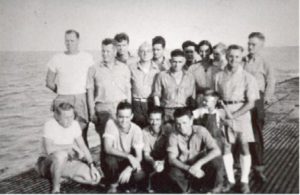
you can read the story of their salvation in these books:
The traces of Carretson & KERSON are lost in history after their salvation.
Compania Maritima
The Compania Maritima has long been the number one among Philippine shipping companies with a considerable fleet.
But the Second World War and the resulting high loss of ships made it difficult for the company. schwer zu.
Losses from typhoons and the financial crisis In 1980 the company gave the rest. The Fernandez brothers gave up the company in 1983 and went back to Spain
One of the few remnants of the once largest shipping company in the Philippinescan still be seen today on Cebu. The ruin of the Fernandez Building is better known than the Shamrock Hotel. One can only guess the former hustle and bustle from the photo, but it makes the story a bit more tangible.
